Home flower spurge: species, reproduction, care
Spurge - an original and beautiful plant that can be successfully grown in an apartment. It gets its name from the white juice that looks like milk.
Content:
- Description and types of milkweed
- Growing conditions
- Reproduction methods
- Transplant and pruning
- Diseases of milkweed
Description and types of milkweed
Most species of milkweed (euphorbia) grow in Africa. Many of them belong to a group of plants called succulents, while others have transformed spines into thorns. There are those who have neither thorns nor thorns. There are trees, shrubs, annual grasses. There are 2 thousand species of milkweed. It grows in the wild and in our latitudes. Occurs in open light areas. All plants under this name have a white sap that looks like milk (milky sap). Hence the name - spurge.
Euphorbia, growing in our wild form, is completely inconspicuous. But the plants that came to us from Africa and their hybrids amaze with their discreet beauty and originality of forms.
Milky juice secreted by milkweed is poisonous.
Therefore, any procedures should be carried out with him carefully, wearing gloves. Do not allow juice to get into eyes or nose. It can cause burns to the mucous membranes. The same will happen if the juice enters the stomach. There is a benefit from it. The juice is used to make whitening creams and lotions to remove freckles. Not all milkweed are poisonous. There are some that can be eaten by animals and people by cutting off the thorns.
It is difficult to determine the general properties of milkweed other than the presence of white juice. Some of the types:
- Euphorbia Mil (shiny) - a tall plant with a grooved trunk and shoots, at the ends of which there are oval leaves 3-5 cm long. The flowers are small, surrounded by red or yellow perianths, located on thin threads and collected in inflorescences.
- Belozhilkovy is distinguished by dark green leaves with noticeable white veins. As it grows, the white color of the veins is lost. The trunk is ribbed, small white flowers are hidden in the axils of the leaves. The leaves located below fall off, and new ones grow on the tops of the shoots. The bottom of the trunk shoot remains bare.
- Ribbed (Crested) euphorbia is similar to white-veined, only its peduncles are much longer.
- Triangular (Triangular) - a tall bush, consisting of many triangular shoots. Small rounded leaves are attached to their crests. By pinching the tops, you can create a plant of the original shape.
- Tirucalli is a succulent plant with almost no leaves. They grow only on young, jointed branches, then fall off. It blooms rarely. Flowers of yellow color are collected in flat inflorescences. The juice is used to remove warts. Do not allow contact with skin, burns are possible.
- The most beautiful poinsettia (Christmas star) is the most beautiful flower among indoor milkweed. Its leaves are green. Small yellow flowers are surrounded by bright bracts, in the form of repeating leaves - red, yellow, cream. They are the main decoration of the flower.
- Bordered (mountain snow) also refers to milkweed. It can often be seen in flower beds. It is an annual plant that is grown from seed. They germinate for a very long time, so it is better to use the seedling method to decorate the flower bed.
Succulent species often resemble cacti. Some of them have thorns. Milkweed succulents include:
- The corpulent is like a ball with noticeable ribs. There are no thorns. As it grows, it stretches into a cylinder.
- Bristle, large-horned and resinous, the ribbed surface of which is covered with thorns.
Growing conditions
Caring for different types of milkweed is slightly different. But almost all of them feel good in apartments, even with central heating. It is more difficult to find a "common language" with Poinsettia the most beautiful, which sheds leaves at the slightest violation of care:
- Euphorbia loves sunlight, can grow both directly under its rays, and when it is scattered. In the summer they can be taken outside. At the same time, they are afraid of drafts, so they need to find a cozy place.
- If the plant is grown in a dark place, the shoots and leaves may turn yellow and lose their beautiful appearance.
- The optimum temperature for milkweed is 20 ° C, but it easily tolerates its increase. The minimum for most species will be 12 ° C. But there are varieties that can easily tolerate a decrease to 4-6 ° C. The place of detention in this case should be light, so as not to put the plant at risk of contracting fungal diseases.
- The stalk of milkweed contains a lot of water. Therefore, you need to water it carefully. The plant will not disappear from drying out for a very long time, and will quickly die from waterlogging. Do not keep the soil in the pot moist all the time, let it dry out between watering. During the active growing season, water is watered once a week; in winter, the number of irrigations and the volume of applied water are further reduced. It is enough to carry out it once a month, and at temperatures below 12 degrees, they generally stop watering. If the soil in the pot is very dry, do not fill it in, but add water in small portions.
- Euphorbia (most species) does not need high air humidity. Spraying will not hurt him, drops of water do not leave marks on the trunk and shoots.
- Euphorbia reacts well to feeding. It is fertilized once a month during the active growing season - in spring and summer. After watering, nitrogen fertilizers are applied, for flowering ones - potash fertilizers.
Reproduction methods
Almost all types of milkweed are easily propagated by stem cuttings... Cut them in the spring from the top of the bush under the leaf. Use a very sharp instrument. Remove all leaves from below, if any. The milky juice is washed off under running water, which will appear at the cut site. You can treat the cut with crushed charcoal. This will prevent decay.
Dry for at least 24 hours until a thin film forms on the cut. They are planted in a moist mixture made from peat and sand. Cover with glass, hide from the bright sun. They are waiting for new leaves to appear. They are transplanted into a separate dish singly or in groups. It depends on the type of milkweed and the size of the pot.
Varieties with large leaves can be propagated in much the same way as cuttings:
- Pinch off the sheet.
- They are waiting for the juice to drain.
- The slice is treated with Kornevin.
- They are planted in a prepared mixture of sand and peat.
- Cover with a glass jar.
- Regularly ventilate and moisturize the soil.
Species that propagate by cuttings can be grown from root suckers found during transplantation. They are separated from the main bush, rooted in the same way as the cuttings, but the process is faster.
The overgrown bush during the dormant period can be divided into several parts and planted separately. Examine root systemso that there are no rotten parts on it. They are cut to a healthy tissue, treated with charcoal.
It is impossible to propagate by cuttings corpulent euphorbia (you cannot cut a cuttings from a spherical body), it is grown from seeds.
But getting them is difficult, because first you need to find the male and female plants, wait for the seeds to form and ripen. For reproduction, it is better to use fresh ones, although they do not lose germination for a year.
To prevent the seeds from falling out on their own and scattering in different directions, cover them with fabric bags. Then they are poured into paper bags. Before planting, they are soaked in water for a day, then sown in a calcined soil. Cover with glass or plastic wrap. Garden euphorbia is also grown from seeds, but it is much easier to obtain them.
Transplant and pruning
Spurge is transplanted as it grows out of the pot, but always in the spring. If the plant was purchased in the fall or early winter, transplant it only as a last resort. Take dishes 2 cm larger than the previous one.
A thick layer of drainage is laid at the bottom, which will allow excess water to be removed from the roots. They take the soil for succulents from the store or prepare a mixture of sod and leafy soil, peat, sand. It should be loose, let air and moisture pass well to the roots of the plant. You can use the soil for cactus.
Euphorbia, growing in the form of a bush, is pruned every spring.
Thus, a bush is formed, giving it the desired shape. To get a very lush bush, cut off all the shoots in early spring. This will lead to the formation of a large number of shoots, and the next year - abundant flowering. Pruning is done with gloves so that its poisonous juice does not get on your hands and does not leave burns. After the operation, the instrument and hands are washed. In the middle of summer, after flowering, sanitary pruning is carried out. Remove dry, elongated shoots. The young are left so that flowers will form on them the next year.
Diseases of milkweed
Problems in the care of most types of milkweed are most often associated with improper care. With an excess of moisture, the shoots turn yellow, which indicates root rot. Overflow is especially dangerous at low temperatures, when the moisture does not have time to dry.
High soil moisture can lead to fungal infections. Dark spots will appear on the shoots. It is necessary to stop watering, process the plant fungicides.
Although milkweed juice is poisonous, some specimens can be affected by whiteflies, scale insects, aphids, root worms and spider mites:
- In whiteflies, small butterflies, the danger is represented by the larvae, which feed on sap, damaging the skin.
- Scabbards appear as white to brown spots. Thrips leave a silvery trail. For destruction, euphorbia is treated with Aktara.
- To fight with aphids it is possible by treating the plant with infusions of onions, garlic, hogweed, alder.
- Spider mite can be seen by a bloom of white on the inside of the sheet and black dots that they leave on the surface. They are removed with a swab dipped in soapy water. Treated with alcohol and insecticides.
- Root worms live in the ground. They are found during transplantation. The soil is changed, the roots are washed with water at temperatures up to 45 degrees. Spill the soil with Aktara. The procedure is repeated 3 times at intervals of a week.
More information can be found in the video:



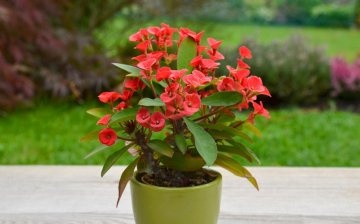
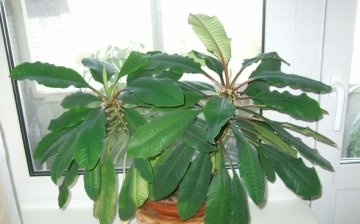
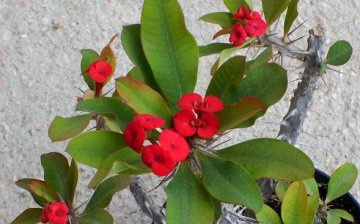

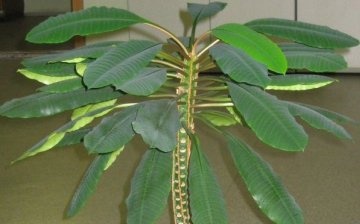
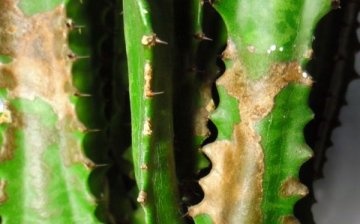






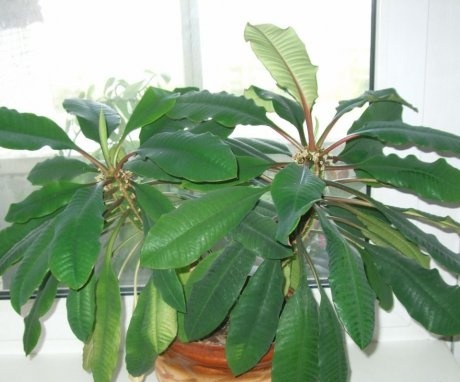
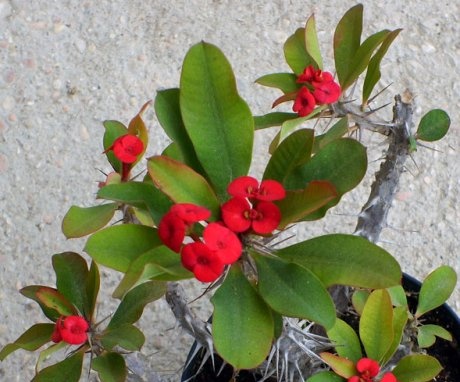
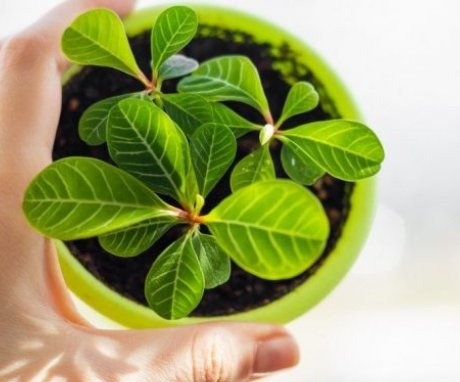
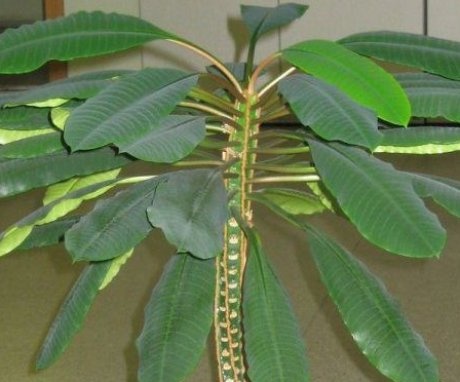
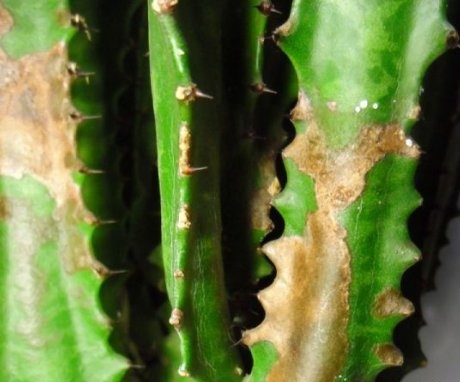
Spurge is poisonous and therefore many do not have it in the house, it is dangerous for pets, for small children who absolutely drag everything into their mouths. And so of course it looks gorgeous and you never think about its danger.